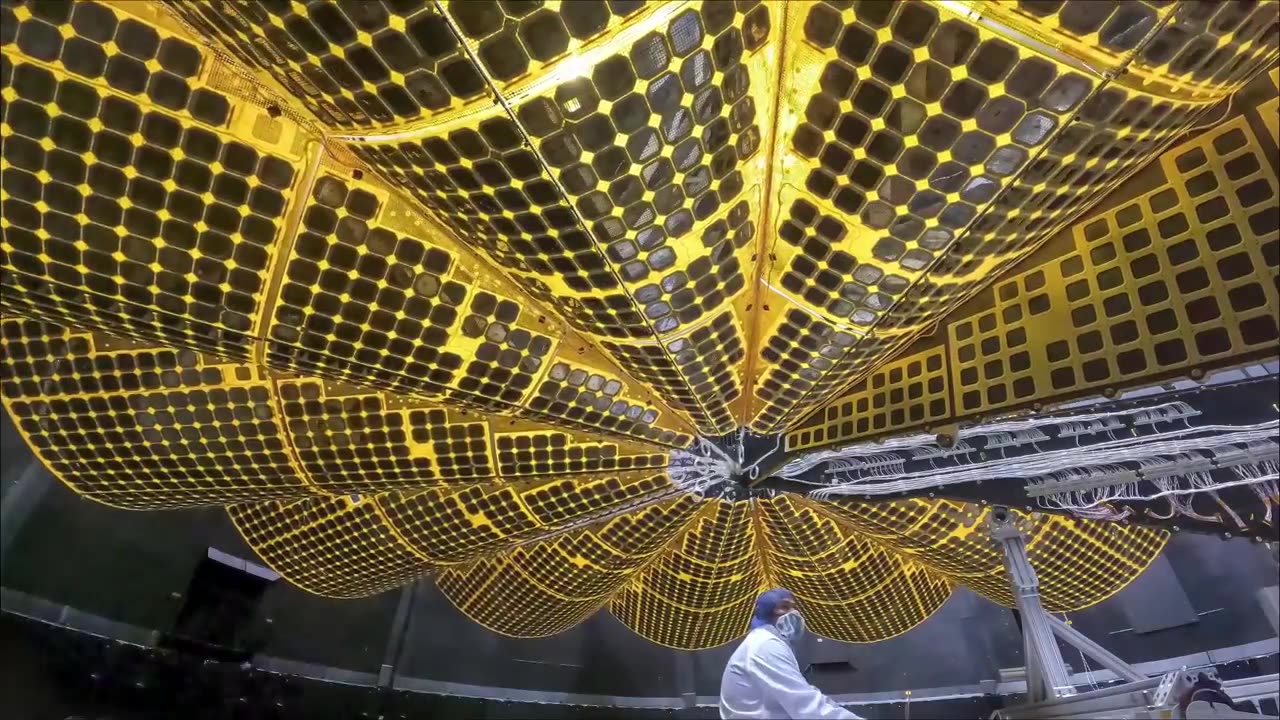Premium Only Content

NASA’s Lucy Mission Extends its Solar Arrays
Yes, you are correct. NASA's Lucy mission successfully extended its solar arrays on October 17, 2021, shortly after its launch from Cape Canaveral Space Force Station in Florida. The two solar arrays are each about 24 feet (7.3 meters) wide and will provide power to the spacecraft as it travels to and studies the Trojan asteroids.
The Trojan asteroids are a group of asteroids that share the orbit of Jupiter around the Sun. They are located in two swarms, one leading Jupiter in its orbit and one trailing it. The Lucy mission will visit seven Trojan asteroids, including five that have never been visited before.
The mission is named after the fossilized human ancestor Lucy, who lived about 3.2 million years ago. The scientists who named the mission hope that it will help them to learn more about the early history of our solar system.
The Lucy mission is scheduled to last for 12 years. It will reach its first target asteroid, the Main Belt asteroid 52246 Donaldjohanson, in April 2025. It will then visit the Trojan asteroids 617 Patroclus and 61620 (1999 TC36), 16 Psyche, 15099 Molorchus, and 11351 Leucus. The mission will conclude with a flyby of the Trojan asteroid 46610 Asteroidea in 2033.
The Lucy mission is a major milestone in the exploration of our solar system. It will provide scientists with valuable insights into the formation and evolution of the solar system.
-
 LIVE
LIVE
Redacted News
1 hour agoHIGH ALERT! DID UKRAINE JUST DECLARE WAR ON HUNGARY? ZELENSKY DEMANDS MORE CASH FROM NATO | REDACTED
16,108 watching -
 LIVE
LIVE
Dr Disrespect
5 hours ago🔴LIVE - DR DISRESPECT - GEARS RELOADED GLOBAL LAUNCH - CRUSHING LOCUST
2,505 watching -
 1:49:34
1:49:34
The Quartering
3 hours agoToday's Breaking News With Melonie Mac & Hannah Claire Brimlow!
134K145 -
 23:16
23:16
Jasmin Laine
1 hour agoCarney HUMILIATED by German Reporter—CTV Host Laughs as Liberals Get DESTROYED on Air
2.67K4 -
 LIVE
LIVE
The HotSeat
1 hour agoLisa Cook Blocks Your Mortgage Relief While Committing Mortgage Fraud – YOU’RE FIRED!
544 watching -
 LIVE
LIVE
The Tom Renz Show
1 hour agoJudges Are Completely Immune From Lawsuits
88 watching -
 1:18:46
1:18:46
Awaken With JP
2 hours agoCracker Barrel Makes Brilliant Decision, Trump Bans Flag Burning and More - LIES Ep 105
41.4K13 -
 29:24
29:24
Stephen Gardner
1 hour ago🔥Trump's Moves Leave CNN Speechless!
9.65K17 -
 1:06:37
1:06:37
Sean Unpaved
4 hours agoCincinnati's Sack King Stays: Decoding the Deal & the NFL's Open-Ended Questions
38.2K -
 LIVE
LIVE
StoneMountain64
4 hours agoWARZONE LEGEND RETURNS. GHILLIE SUIT $20k TOURNEY.
150 watching